The long-haired dachshund is a stunning and affectionate breed that has captivated dog lovers for generations. With their silky coats, playful personalities, and loyal nature, these charming dogs make excellent companions for individuals and families alike. If you’re considering adding a long haired dachshund to your home, or simply want to learn more about them, this comprehensive guide will cover everything you need to know.
Origins and History of the Long-Haired Dachshund
The dachshund, which translates to “badger dog” in German, was originally bred in Germany over 600 years ago to hunt burrowing animals such as badgers and rabbits. Their elongated bodies and short legs allowed them to navigate through tunnels with ease. While the standard smooth-coated dachshund was the original variety, the long haired dachshund is believed to have been developed by crossing dachshunds with spaniels and other long-haired breeds.
The long-haired variety gained popularity for its elegant appearance and slightly softer temperament compared to its smooth-coated and wire-haired counterparts. Today, long-haired dachshunds are adored for both their looks and their endearing personalities.
Physical Characteristics
Long-haired dachshunds share the same basic structure as other dachshund varieties but are distinguished by their gorgeous, flowing coats. Key features include:
- Size: They typically weigh between 11 and 32 pounds, depending on whether they are miniature or standard size.
- Coat: Their long, silky fur is smooth to the touch and can come in a variety of colors, including red, black and tan, chocolate, cream, and dapple.
- Body Structure: They have the classic dachshund shape—long and low to the ground with short, sturdy legs.
- Eyes and Ears: They possess expressive eyes and long, floppy ears, which give them an adorable, intelligent look.
Types of Long Haired Dachshund
Long-haired dachshunds come in different variations based on size and color patterns. Here are the three main size categories:
1. Standard Long-Haired Dachshund
- This is the largest type of dachshund, typically weighing between 16 and 32 pounds.
- They have a sturdy build and are ideal for active owners who enjoy outdoor activities.
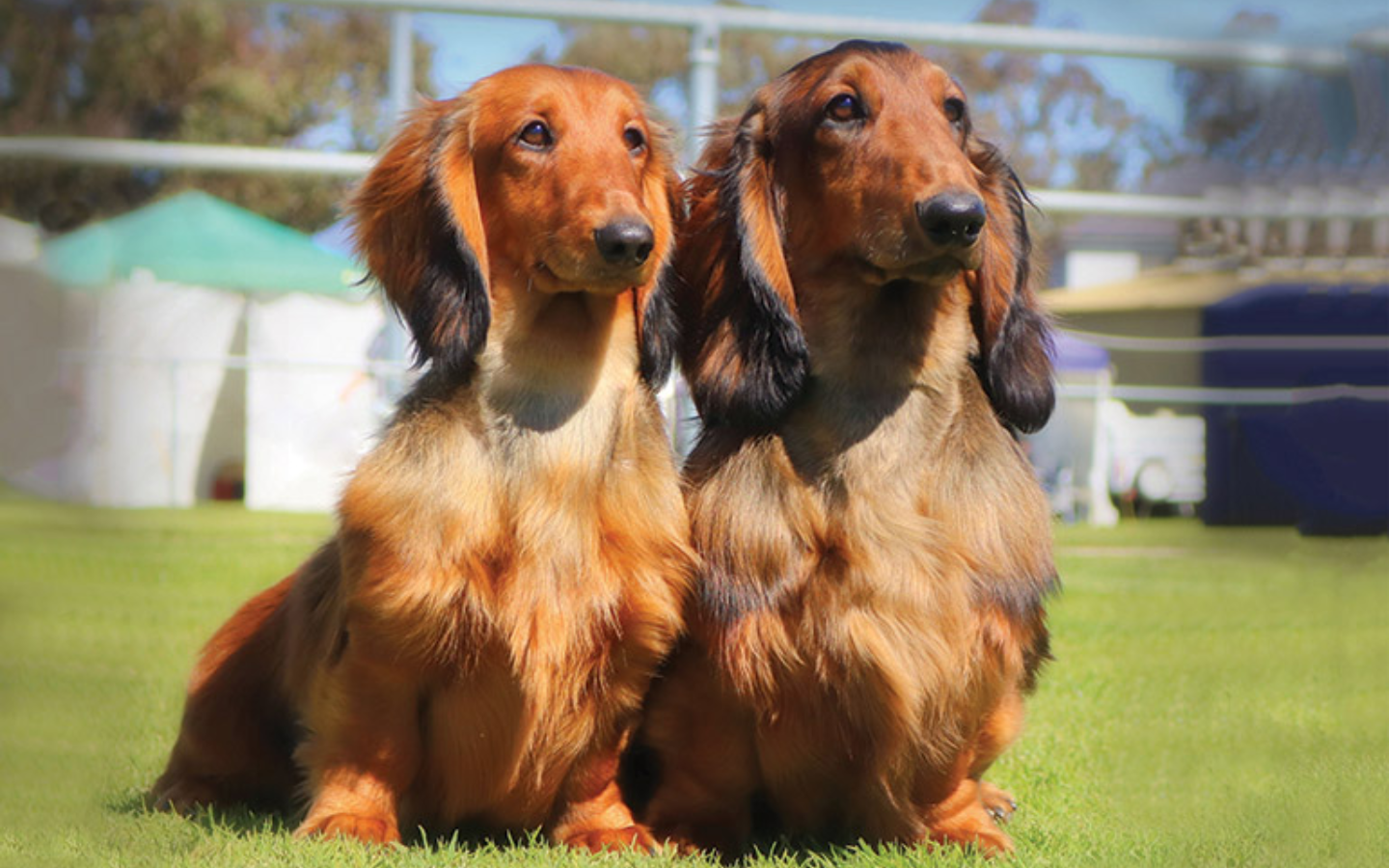
2. Miniature Long-Haired Dachshund
- Miniature dachshunds are smaller, weighing under 11 pounds.
- They are perfect for those living in apartments or homes with limited space.
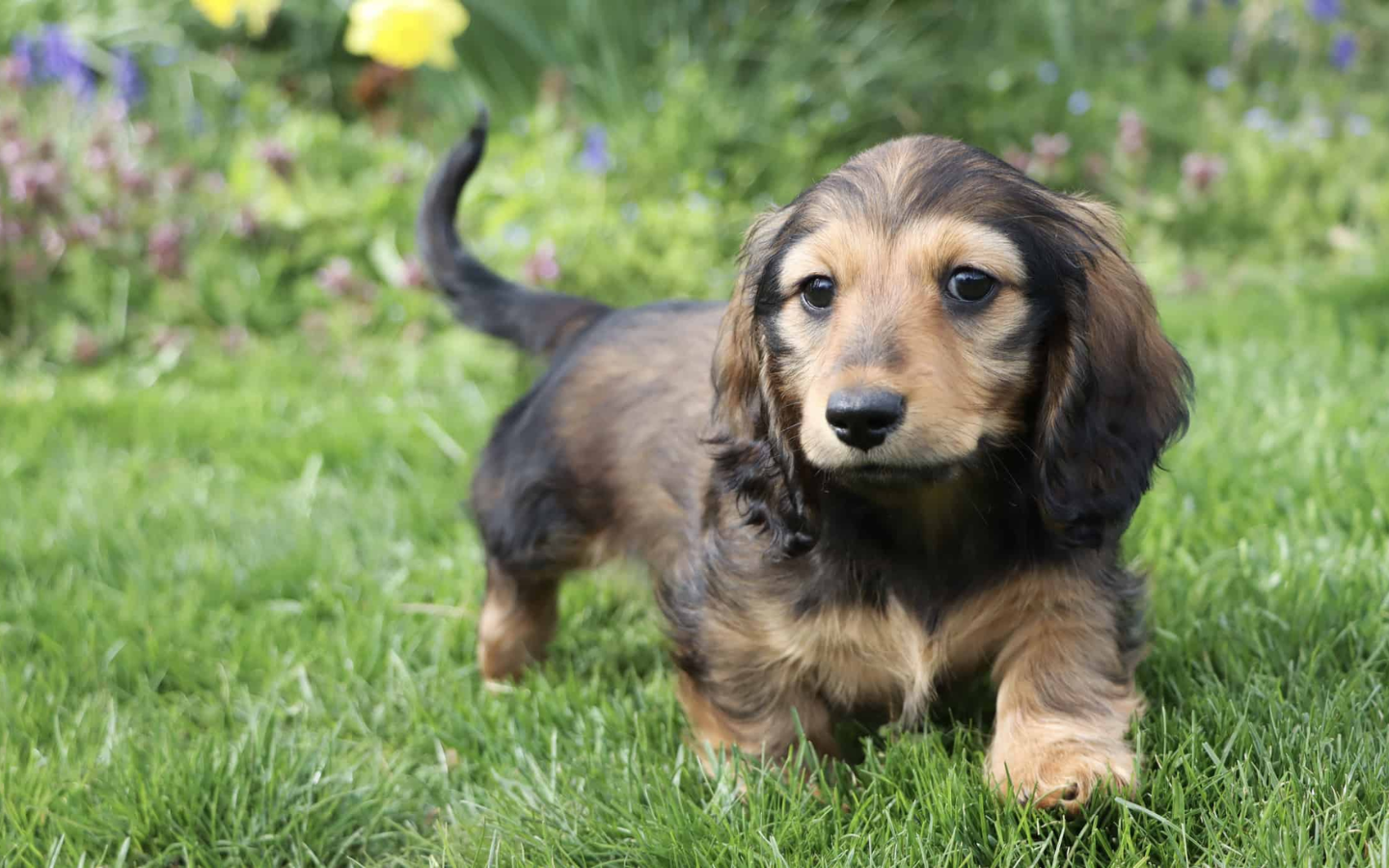
3. Kaninchen (Rabbit) Long-Haired Dachshund
- This is the smallest variation, weighing under 8 pounds.
- More popular in Europe, the kaninchen dachshund was bred specifically for hunting rabbits.
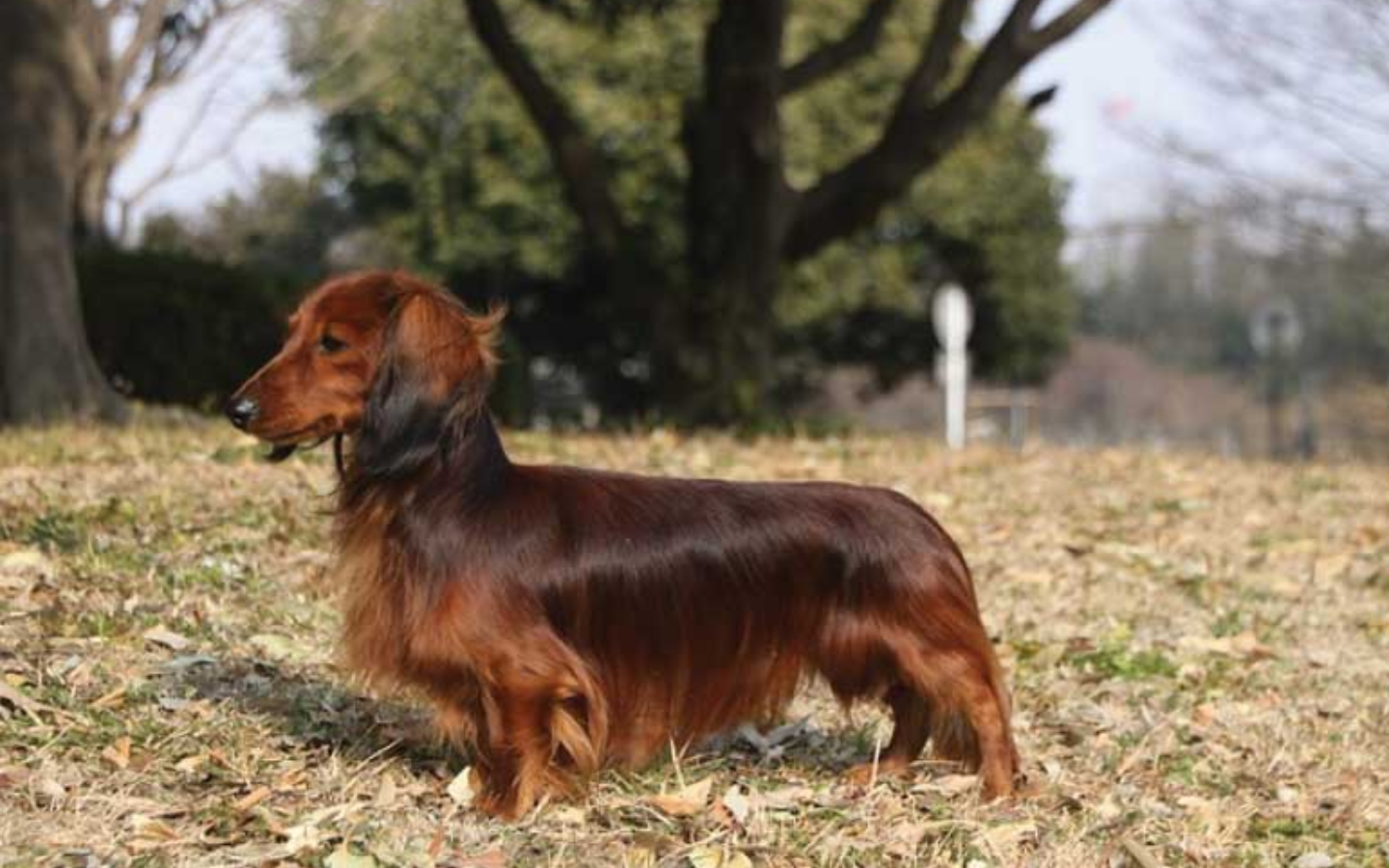
Do Long-Haired Dachshunds Shed?
Yes, long haired dachshund do shed, though not excessively. Their shedding level is moderate compared to other breeds. The length and texture of their fur mean that they require more grooming than smooth-coated dachshunds, but regular brushing (at least a few times a week) helps manage shedding and prevents matting. Seasonal shedding is common, especially in the spring and fall, so extra grooming during these periods is recommended.
Are Long Haired Dachshund Hypoallergenic?
No, long haired dachshund are not hypoallergenic. While their shedding isn’t extreme, they do produce dander, which can trigger allergies in sensitive individuals. If you suffer from pet allergies but are determined to have a dachshund, regular grooming and maintaining a clean home can help minimize allergens.
Temperament and Personality
Long-haired dachshunds are known for their playful, affectionate, and sometimes stubborn personalities. Their temperament is often described as:
- Loyal and Loving: They form strong bonds with their owners and love to be involved in family activities.
- Intelligent but Stubborn: Dachshunds are smart but can have an independent streak, which may make training a challenge.
- Playful and Energetic: Despite their small size, these dogs are lively and require daily exercise to stay healthy.
- Protective: They may be small, but they are excellent watchdogs and tend to be wary of strangers.
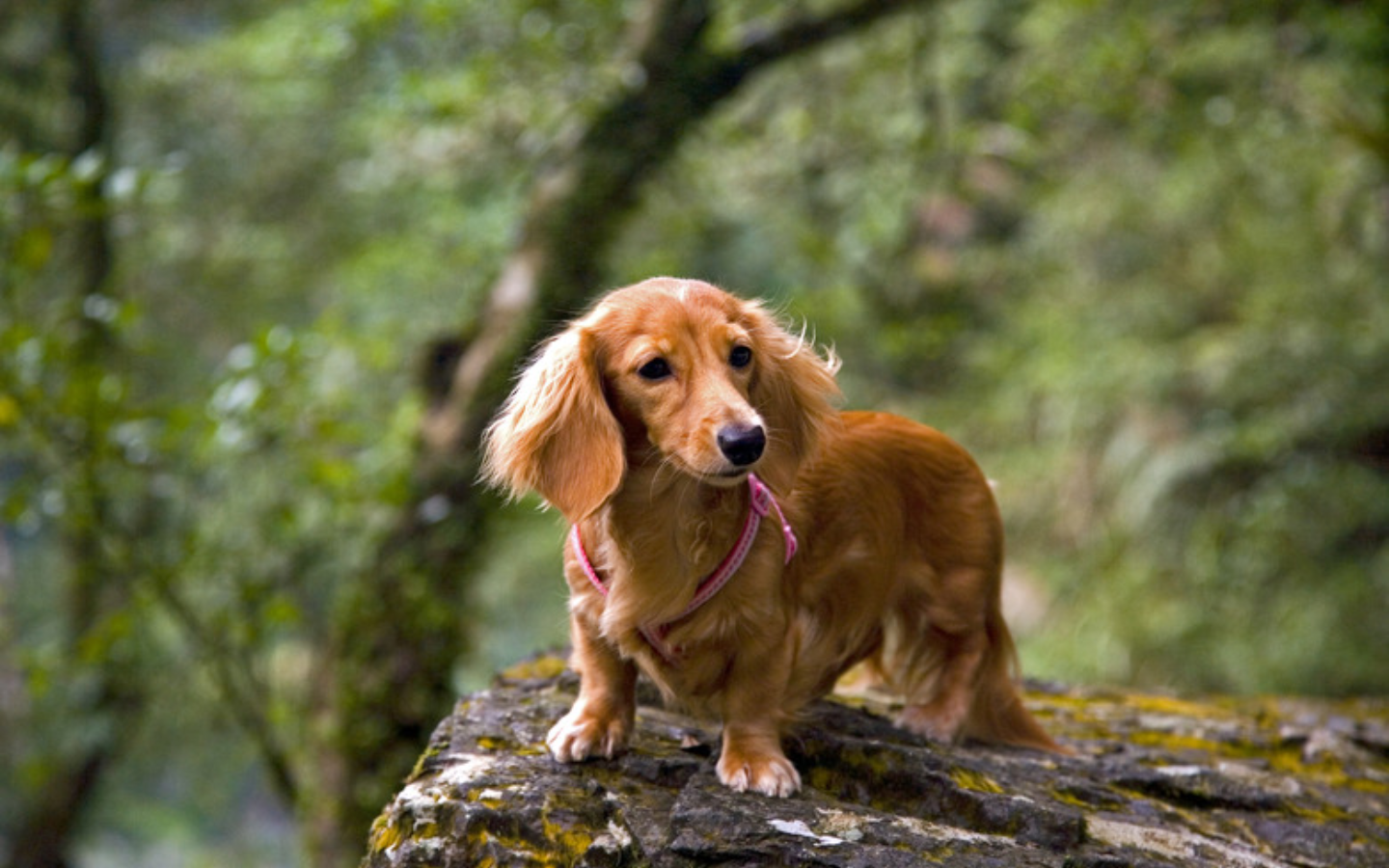
Training and Socialization
Training a long haired dachshund requires patience and consistency. Since they were originally bred as hunting dogs, they have a strong prey drive and can be stubborn when they set their minds on something. Here are some training tips:
- Start Early: Begin training and socialization from a young age to ensure they grow into well-behaved adults.
- Use Positive Reinforcement: Reward-based training with treats and praise works best with this breed.
- Be Patient: Dachshunds have a mind of their own, so consistency and persistence are key.
- Socialize Extensively: Introduce them to different environments, people, and other animals early to prevent shyness or aggression.
Exercise and Activity Needs
Despite their small stature, long-haired dachshunds have moderate energy levels and enjoy staying active. They benefit from:
- Daily Walks: At least 30 minutes of walking a day helps keep them fit.
- Playtime: They love interactive games like fetch and hide-and-seek.
- Mental Stimulation: Puzzle toys and scent-tracking activities can help satisfy their intelligent minds.
How Much Do Long Haired Dachshund Cost?
The price of a long haired dachshund varies based on factors such as pedigree, breeder reputation, and location. Here’s a general cost breakdown:
- From a Reputable Breeder: $1,000 to $3,500 (higher for show-quality dogs).
- Adoption from a Shelter or Rescue: $200 to $500.
- Ongoing Expenses: Expect to spend around $500 to $1,000 annually on food, grooming, and veterinary care.

Like all dachshunds, the long-haired variety is prone to certain health issues, including:
- Intervertebral Disc Disease (IVDD): Due to their long spines, dachshunds are at risk for back problems. Avoid letting them jump off high surfaces.
- Obesity: Being overweight can exacerbate back issues, so maintaining a healthy diet and exercise routine is crucial.
- Ear Infections: Their floppy ears can trap moisture and lead to infections, so regular ear cleaning is recommended.
Grooming and Care
Long-haired dachshunds require more grooming than their smooth-coated counterparts. Essential grooming practices include:
- Brushing: A few times a week to prevent tangles and matting.
- Bathing: Once a month or as needed.
- Nail Trimming: Regularly to prevent overgrowth and discomfort.
- Ear Cleaning: Weekly to reduce the risk of infections.
Long-haired dachshunds are a wonderful combination of beauty, intelligence, and charm. Whether you’re looking for a loyal companion, an energetic playmate, or a cuddly lap dog, this breed has it all. With proper care, training, and love, a long-haired dachshund can bring years of joy and companionship to your home.
Javier Cortes – Founder of Pete’s Pet Supply store since 1993. Has a lot of experience in the animal and pet industry. From professional knowledge of the industry and experience in caring for, buying and selling food, toys and equipment for pets. Javier Cortes often shares this knowledge on forums and the store’s website.
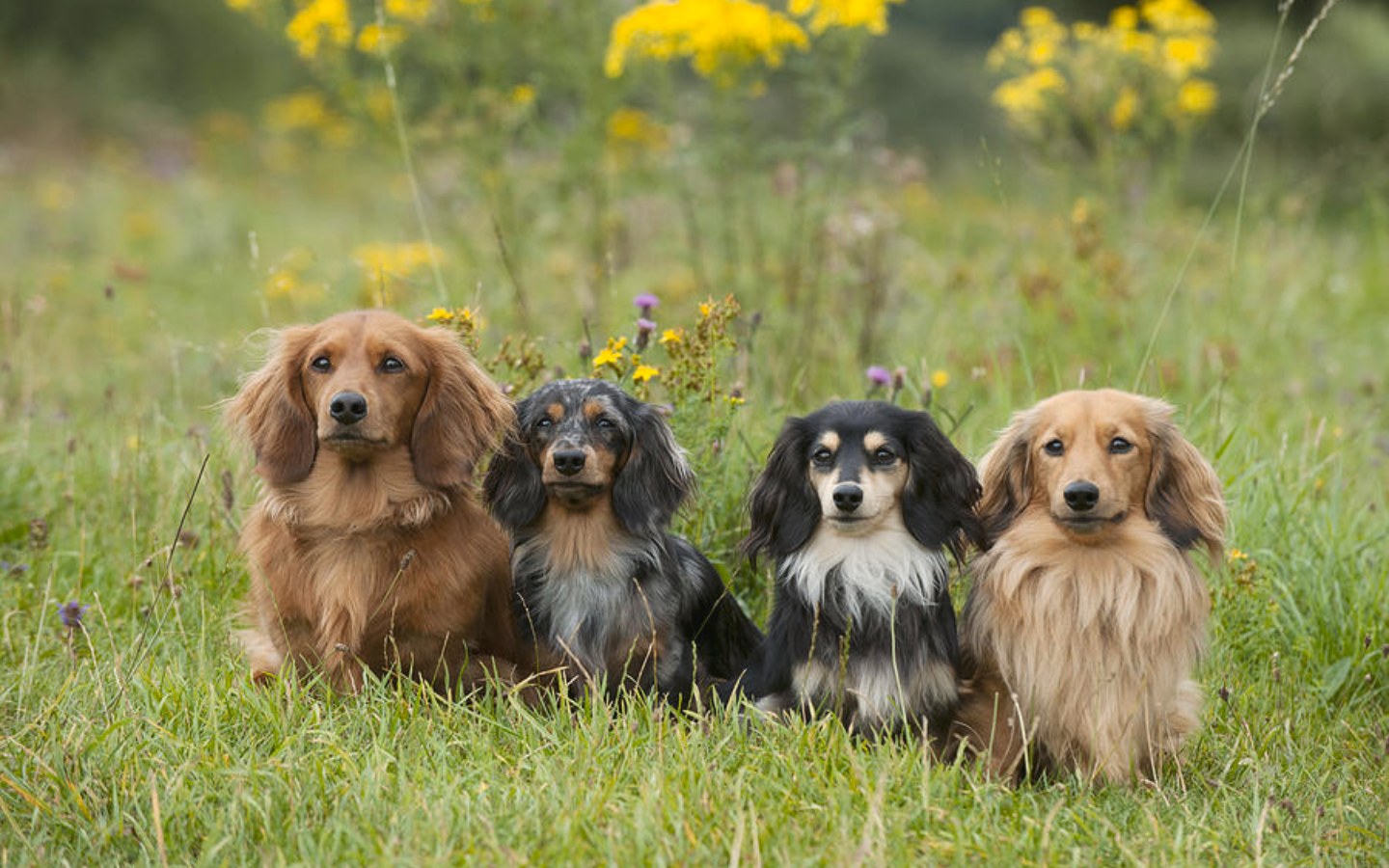
Leave a Reply